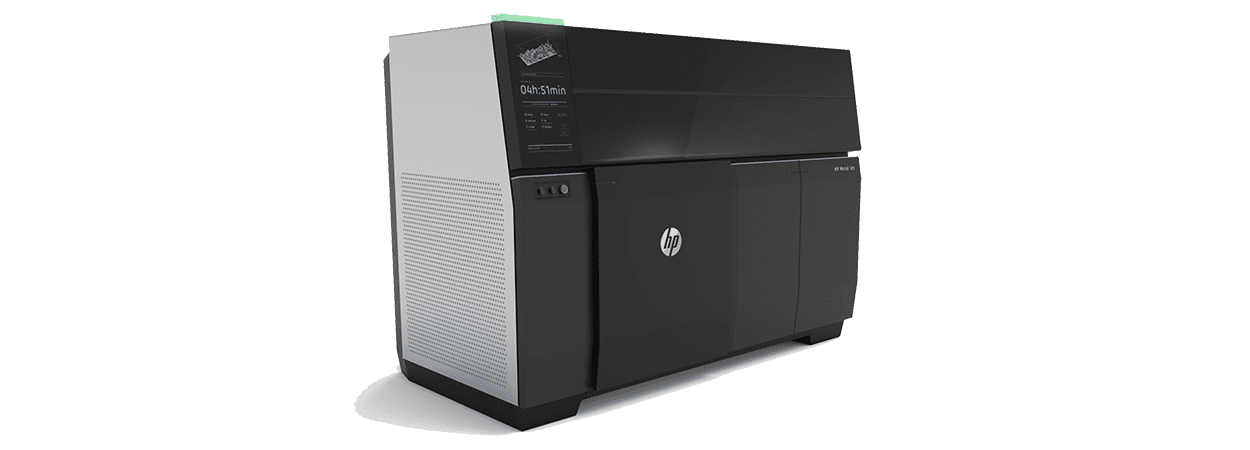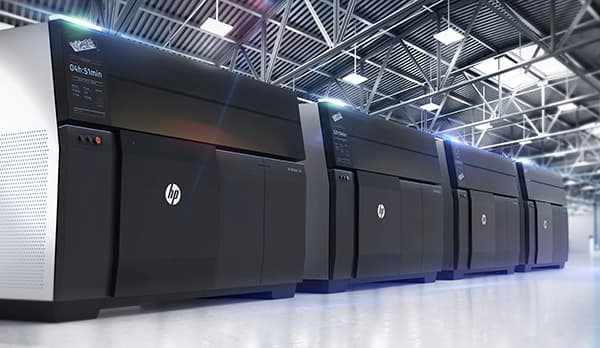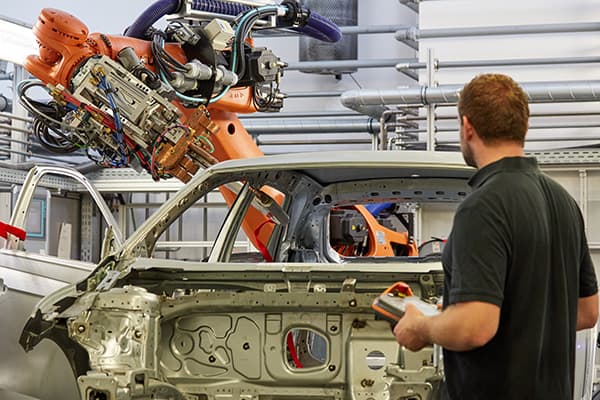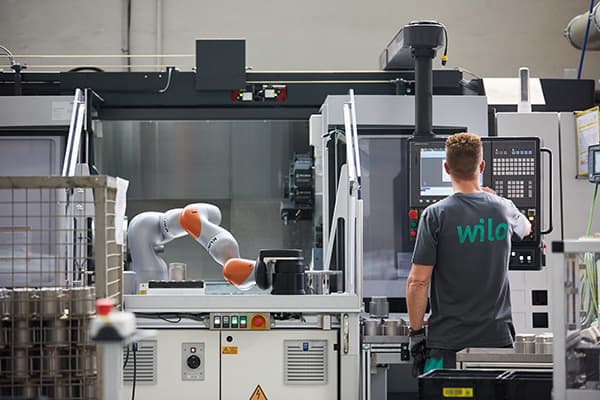We use cookies to offer you a better experience. For more information on how we use cookies you can read our Cookie and Privacy Policy.
Future of Industrial Production: The Metal 3D Printer

The technological breakthrough of 3D printing will change the face of production in almost every way. In original production lines, multiple parts were assembled together by people, versus mechanical arms, while moving through the system down the conveyor belt.
During the Post-Industrial Revolution, more and more automatic machinery replaced physical, manual labor in order to boost efficiency and cut down on labor costs. However, while this may have solved a number of business demands, it also presented new problems.
Each metal piece of machinery on the production line is made from a replicated cast. If a cast is flawed or becomes damaged, a completely new one must be made to replace it; otherwise, even the smallest of misalignments can create a domino effect of consequences, such as a failed or dysfunctional product.
Metal 3D printing has the potential to eliminate such disruptions and presents the possibility to streamline the production across entire industries. How does 3D metal printing work?
The multiple methods of 3D printing
There are three primary ways 3D printing methods used in the market today: Selective Laser Melting (SLM), Direct Metal Laser Sintering (DMLS), and binder jetting.
These fabrication processes are similar in that with each method lasers scan and selectively melt metal particles, bonding them together to form a predetermined structure [1].
Minimize ozidation
The first step in the process is to fill the build chamber with inert gas (such as argon) in order to minimize the amount of metal oxidation. Once filled with gas, the chamber’s temperature is heated to the optimal building conditions; if the chamber is too cold, the metal may set too quickly, but if it’s too hot the metal may not hold shape after being printed.
Fabricate the part
In the second phase of the fabrication process, a thin layer of metal powder is spread over the build platform before being scanned by a laser in order to be melted (or fused) together.
This process is repeated layer by layer until the object is complete. The entire metal piece is scanned continuously to ensure that the part is fully built. Once the process is finished, the object is removed from the powder bed. Depending on the technique, it may or may not use support structures to bind together.
3D printing companies are still developing this new technology, and leading pioneers in the industry continue to find new ways to grow and innovate. With the HP Metal Jet 3D printer, for example, HP® has partnered with the GKN Powder Metallurgy® and Parmatech®, a world leader in metal injection molding, to deliver the best 3D prints possible.
The HP Metal Jet printer uses the binder jetting production process for 3D prints. Binder jetting requires a binder that is selectively transferred onto a powder bed. The powder bonds to the binder in the areas where it has been deposited to create a solid layer [2]. The process repeats until the part is printed.
Finishing steps
Depending on the material used in the 3D printer, there's usually a finishing step required. For example, metal parts printed with HP Metal Jet technology need to be decaked and sintered. Additional finishing processes, such as sand blasting or buff polishing, can be used to treat the surface of the part to improve its visual appeal and increase durability.
Why use a metal 3D printer?
3D metal printers provide a much more dynamic method to manufacture metal machinery than traditional methods . An aerospace engineering company could use this technology for prototype models, while a car manufacturer might use the same technology to order 3D metal parts.
There are multiple scenarios in which 3D metal printing will be much faster and more efficient than traditional methods of industrial production. Productivity skyrockets with the capability of producing high volumes of parts, faster and with fewer steps, to accelerate development cycles.
From engineers to technological enterprises, flocks of companies are making the switch from assembly line production to 3D metal printers.
Just in terms of weight, a 3D metal printer creates a significantly lighter product - up to 60% lighter than traditional production methods - leading to downstream savings in cost [2]. Whereas standard means of production require binding solutions and different forms of adhesive to hold them together, metal 3D printers may completely eliminate the need for these adhesives.
In the aviation industry, for example, lighter parts could drastically reduce fuel and shipment costs, growing margins and driving profits. Considering that up to 90% of the original material has to be cut away when producing metal airplane parts [3], an industrial 3D printer could also help eliminate unnecessary waste. Even if most of those excess materials will be reused and recycled, repurposing the spent metal still requires a significant amount of energy and manpower.
If airline manufacturers were to implement aluminum 3D printers into their production process, it would drastically increase efficiency, reduce waste, and save money on production costs - and this is only one example of an industry that stands to benefit from a 3D printing machine.
What can be 3D printed?
The big question when it comes to 3D metal printers is “What can’t they do?” The options seem limitless to 3D printing companies, and in most cases, the printer is only limited by the size of the pieces it can make and the materials it uses for fabrication.
The size of a metal 3D printer’s build chamber determines the size of the pieces it can produce. Although they may be capable of building custom, geometrically-complex parts, currently they won’t be very big. It will be sometime before 3D printing machines are massive enough to produce objects such as car frames and airplane bodies.
Innovative 3D printing companies and technologies
3D printing companies at the forefront of this field continue to think of new ways the technology can be improved and applied. HP® is a stand-out leader in this arena with the introduction of the HP Metal Jet, HP’s 3D printer.

The HP Metal Jet is a highly advanced, industrial-grade 3D metal printer capable of producing metal printed objects at a high frequency in large volumes. It’s proven to be up to 50 times more productive than traditional industrial production methods [4] due to its ability to cut down steps, produce parts faster, and accelerate product development cycles.
Multi-Jet Fusion technology that boasts high voxel resolution (“volume element” or the equivalent of a pixel in 2D printing) can produce incredibly fine details with precisely defined edges on surfaces both inside and outside of the part - and that’s just part of what sets the HP 3D metal printer apart from other 3D printing companies making their way into the field.
The technology works by bonding sections of layered metal powder with HP’s isometric mechanical properties and proprietary binding agent, which allows the machine to print multiple strong, functional pieces.
After the 3D prints are finished, they can easily be removed from the powder bed and the remaining powder can be reused for future metal prints. Such high reusability of materials helps businesses reduce material cost and waste [5].
With a binder jetting of 430 x 320 x 200 mm, the HP 3D printer can produce metal parts much larger than other 3D printing companies are capable of, and 4-times nozzle redundancy means that up to four different nozzles can print the HP Binding Agent in the same 1200 dpi grid [6].
The HP Metal Jet printer reflects breakthroughs in speed, quality, and cost-efficiency when it comes to large-scale, industrial 3D printing, and reflects how these new technologies can revolutionize production mechanisms.
Industrial 3D printing application and everyday impact
3D printers stand to benefit a huge number of industries. There are a few ways that 3D metal printing will accomplish things we never could before. Geometric structures and designs that would have required multiple casts and bonding could be finished in a single process. Materials that once presented problems and difficulties like metal superalloys will be easier to work with.
Furthermore, many 3D printing companies are capable of making topologically optimized parts, meaning they are denser and stronger in the sections that experience more stress or impact. While this may not seem like a big deal, it could lead to big changes in production for transportation manufacturers, for instance.

Lighter structure and frame means a vessel has to burn less fuel and consume less energy to move. The metal 3D printer’s ability to delegate density within a structure reduces unnecessary weight, leading to savings in energy and resources in more ways than one.
Not only will components require fewer materials for fabrication, but they’ll need less energy during production as well. This not only benefits the company’s profit margins but also the global environment at large.
The automotive industry is sure to change drastically - especially when it comes to original equipment manufacturer (OEM). What many don’t know is that a large portion of car parts are produced by third-parties.
Even within metal shops and automotive repair shops, metal printing technology could completely eliminate the need to order replacement parts. Instead, shop owners could print the parts they needed in real time. This could cut back on shipping costs, man-hours, and a handful of additional expenses.
However, industrial 3D metal printers aren’t cheap. It will be some time before they become affordable for small to mid-sized businesses, but the prospect is nonetheless exciting. Over time, the limitations surrounding cost, scaling capacity, part size, and fabrication materials will most likely be resolved as the 3D metal printer continues to improve and better establishes itself in the industrial world.
3D printer manufacturers lead the next industrial revolution
The evolution of the 3D printer is sure to have a massive impact on industrial production.

It’s possible that we may see a reversal of the trend of so many manufacturing plants and jobs being outsourced to other countries.
Because so many companies and major manufacturers will need high-level technicians and engineers to work on their 3D printers, we may begin to see production return to the US.
However, metal 3D printers are still relatively new and reserved for mass-scale production. The more likely trend we can expect in the immediate future is a business-to-business model in which 3D metal printing companies offer their services to other businesses that need efficient metal parts.
As the technology becomes more commonplace, the cost of production will likely drop. Soon, smaller companies and even small businesses might be able to access this technology for a fraction of the current price.
The world of manufacturing continues to stay on an automated trajectory, and it looks like 3D printing is the next stage in this development.
Perhaps the biggest advancement offered by 3D printing is the ability to create intricate designs with relative ease, lowering production costs of highly complex metal designs across the board.
Companies that value reducing waste and minimizing the effects of climate change are certain to gravitate towards this technology since metal 3D printers have little to no waste and high reusability of materials.
The ability to mass produce reliable products at high speeds and low cost is the best way to take your business to the next level, so think about the potential of outsourcing your industrial production to a 3D metal printing company and consider the benefits you stand to gain.
[1] 3D Hubs; Introduction to Metal 3D Printing
[2] 3D Hubs; Introduction to Binder Printing
[3] All3DP; 2018 Metal 3D Printer Guide - All About Metal Printing
[4] ScienceDirect; Aircraft Materials
[5] Based on comparable competitive binder jetting and selective laser melting (SLM) metals 3D printing solutions available as of July 31, 2018. Productivity claim based on: 1) up to 50 times more productive, on average, based on print speed for serial production up to 100,000 parts, and 2) solution acquisition cost.
[6] Compared to selective laser melting (SLM) and based on internal testing of HP Metal Jet technology, as of September 2018.
[7] HP Metal Jet Technology; HP’s Digital Printing Technology for Metals
Related articles:
- How Does a 3D Printer Work?
- Top 5 Uses for Home 3D Printers
- HP®’s New Metal Jet Chief on the 3D-Printing Technology About to Transform Mass Production
About the Author: Sean Whaley is a contributing writer for HP® Tech Takes. Sean is a content creation specialist based in San Diego, California. He has a wide breadth of knowledge when it comes to computer hardware, programming, and PC gaming.
Article reposted with permission from HP Tech Takes






